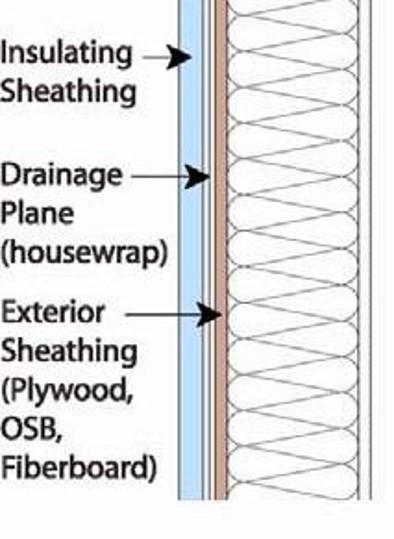
Building Basics
Soffit and Fascia are Installed: Reducing Wind Washing
Wind washing is the movement of unconditioned air around or through a new home in a way that diminishes its intended thermal performance. This can occur in:
- Attics that are vented at the soffits
- Where conditioned spaces border unconditioned space.
Air can enter a house via:
- Natural infiltration (wind and temperature differential forces)
- Mechanical infiltration (heating, cooling, and ventilation mechanical systems).
A whole-house draft barrier is a continuous, air-tight layer that prevents air leaks and can be integrated with other materials to function as a water barrier, thermal barrier, and vapor barrier. Draft barriers block air flow that can hinder the new home’s thermal protection within a complete high-performance insulation system. This means less wasted energy along with enhanced comfort, quiet, and durability.
Identify areas likely to be susceptible to wind washing (e.g., attic soffit vents, cantilevered floors, open porch ceilings adjacent to second-story floor cavities).
- Install baffles at each rafter bay with a soffit vent to direct air flow and wind above rather than through attic insulation, then air-seal top plate-drywall seams at ceiling corners.
- Air-seal floor cavities under attic kneewalls and cantilevered floors.
- Air-seal rim joists on the home’s second story.
- Air-seal walls that split porch attic areas from the house or house attic.
Use blower door testing in combination with infrared thermography to locate areas of wind washing and to confirm successful repair.